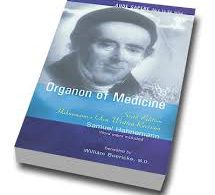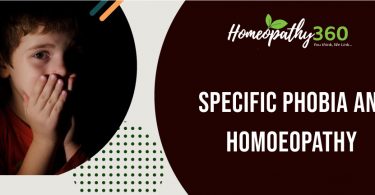
ABSTRACT: – Regional or clinical repertories are those repertories that contain symptoms/conditions and the corresponding group of medicines. These repertories help in the selection of remedies based on clinical symptoms, pathological similarity, causation, modalities, and concomitants. They are used as a reference for the selection of medicine. They are particular to organs or systems, so it is easy to find medicine based on clinical conditions or pathological conditions related to organs or systems of the body such as bell’s diarrhoea, Berridge’s eye, and Minton’s uterus.
However, these repertories can be used for the repertorization of cases where clinical conditions mask the characteristics of the patient. In such cases, the physician finds the prominent common symptoms with a few modalities and concomitants. These cases need the help of clinical repertories for selecting the similimum.
KEYWORDS: – regional/ clinical repertories, repertorization, similimum, nosological, remedy.
INTRODUCTION: –
ORIGIN OF CONCEPT OF CLINICAL REPERTORIES: –
Despite the emphasis on individualization and prescription based on characteristic expressions, the emergence of clinical repertories could not be prevented in homeopathic practice as early as Hahnemann’s time. The grouping of medicines according to the name of diseases, though discouraged by many stalwarts, has given birth to clinical repertories. The greatest modern exponent of this practice is the late Dr. J Crompton Burnett, who has brought once more to light the vast therapeutic treasures which had been allowed to lie forgotten in the works of the great masters. The use of nosological correspondence is one method using which a similar, if not the most similar remedy may be discovered.
All ways of finding indications are open to practitioners and the clinical avenue is one of them. J.H. Clarke has described it like this, “Certain diseases come to have certain remedies assigned to them and all the patients who are found to be suffering from any given disease must be dosed with one of the remedies credited to it.”
Master Hahnemann was certainly not happy with such kind of practice; he described it as, “Treating the names of the diseases with names of therapeutic actions” Such a kind of practice was favored by Dr. J. Crompton Burnett. He expresses it as, “The fact is, we need any and every way of finding the right remedy; the simple simile, the simple symptomatic similimum, and the furthest reach of all–the pathological similimum, and I maintain that we are still within the lines of homeopathy that is, an expansive, progressive science.”
As early as 1869, Bell’s Diarrhoea and in 1873 Berridge’s Eye, two very useful clinical regional repertories were published. Though the concept of such practice was conceived by Burnett he could not compile a separate repertory for that purpose and hence the credit for authoring the first useful general clinical repertory goes to J.H. Clarke.
THE PRESCRIBER deals with the treatment and the directions instead of dealing with generalities and minute particulars for ready application to any case of any disease.[1]
Though many clinical repertories are available these days. Two of them are well known as ‘general clinical repertory. They are-A Clinical Repertory by J.H. Clarke and Materia Medica Repertory by O.E. Boericke.
The importance of clinical repertories in homeopathy cannot be neglected, (Considering FN§235 of Organon of Medicine, 5th ed.) though Master Hahnemann has criticized the treatment of so-called “disease entities” as it is a personal event to an individual; it is impossible to build a science merely by compiling a great number of individual observations. It is a “prima facie” method of reducing the number of probable similar drugs for a diseased condition bearing a nosologically label.
There are many useful regional clinical repertories that help practitioners to find a similar remedy.
USES OF REGIONAL REPERTORIES
- Clinical repertories can be used in the study of homeopathic therapeutics as well as Materia medica.
- They help to repertorize the following type of cases-
- Cases lacking in mental general and physical general, but rich in common symptoms.
- Cases with clinical diagnosis.
- Short case with a few symptoms.
- They are used as quick reference books at the bedside.
- Clinical repertories contain some rubrics, which are not found in other general repertories; therefore, they can become a good companion in the study of such rubrics.
- Clinical repertories help us to find the most appropriate palliative medicine in incurable cases.
- Regional repertories help in finding out of similimum in a specific clinical condition.[2]
There are some repertories that I will explain here and we will know about how to use these repertories—
GENERAL CLINICAL REPERTORIES
Clinical repertory by J. H. Clarke [3]: –
The repertory has been designed for use in the study of Materia medica, it is no less than an instrument in finding out a remedy. This repertory has been presented in five main chapters by which we can easily reach to that portion whatever we want to know. They are
- Clinical repertory
- Repertory of causation
- Repertory of temperaments, dispositions, constitutions and states.
- Repertory of clinical relationships.
- Repertory of natural relationships.
Clinical repertory by O. E. boericke[4]
It is the most widely used bedside clinical repertory which has been attached to homeopathic Materia medica by William boericke. This repertory has many rare remedies which help us to widen our knowledge of Materia medica and treat the patients therapeutically.
REGIONAL CLINICAL REPERTORIES
CLINICAL REPERTORIES BASED ON PARTS :-
Complete repertory to the homeopathic Materia medica on the disease of the eyes by Berridge [5]: – This repertory contains eyes-related problems or symptoms. With the help of this repertory, we can easily find remedies.
Uterine therapeutics by Henry Minton [6]: –Uterine therapeutics is a useful monograph on the problems of menstruation and other related functions such as amenorrhoea, metrorrhagia, lochia, and leucorrhoea.
Skin diseases by M. F. Douglas [7]:- This is basically a therapeutic book, that deals with skin diseases including the anatomy of the skin, some general observations, etiology, and various clinical conditions. Medicines are discussed under clinical conditions.
Homeopathy: Therapeutics of the respiratory system by M. W. Van Denburg: – This book contains a repertory and materia medica of those drugs which have their main sphere of action on respiratory organs and affect respiratory organs and affect respiratory as well as related functions in different individual. This repertory is good for reference.
Ophthalmic diseases and therapeutics by Edwin. S. Munson:- In this repertory authors gave remedies names according to parts of the eye that are suffering and also give how to examine the eyes and told about the use of an ophthalmoscope.
Repertory of the urinary organs and prostate gland including condylomata by A. R. Morgan: – Author has extended his area of observation so as to include the following – morbid phenomena of the whole urinary tract, from kidneys to meatus urinarius, together with the character and qualities of the urine and its sediments; the concomitants of micturition, also symptoms of the prostate gland and finally condylomata.
Repertory of psychic remedies with Materia medica by Jean-Pierre Gallavardin :- All medicinal substance provoke always some psychic and somatic symptoms. It includes plastic medicines, observations and repertory of 64 homeopathic medicines for developing, thinking, modifying and modelling some parts of the body.
CLINICAL REPERTORIES BASED ON CONDITIONS:-
The rheumatic remedies by Herbert A. Roberts [8]:- In this repertory, the rheumatic symptomatology of each remedy has been discussed under its name. The concomitants, aggravations, and ameliorations described under the name of the remedy contain more valuable and individualizing features of the remedy.
The homeopathic therapeutics of diarrhea, dysentery, cholera morbus, cholera infantum, and all other loose evacuations of the bowels by James. B. Bell [9]:- The basic intention behind the book was not to include all remedies producing diarrhea, but only, every remedy which is known enough for its action on the type of stool, Condition of Aggravation, Amelioration & Causation, Concomitants.
The homeopathic therapeutics of hemorrhoids by William Jefferson guernsey [10]:– The writer emphasizes that, what we have in his first edition, are the proven remedies to restore health easily, surely, and safely, in all patients suffering from uncomplicated piles. Indeed, complicated cases should not be too quickly turned over to the surgeon, simply because they are such. The fact regarding potency, the author claims that cases can be cured with high potency” of internal remedy, given alone. He also admits that the low potency” may also answer the purpose but often resort to topical measures for the disease.
The therapeutics of fevers by H. C. Allen:- This book includes the therapeutics of typhoid, typhus, and fever of every grade and name, from acute sporadic and epidemic intermittent to the malignant type of malarial fevers of the tropics. William A. Allen, after treating several cases of intermittent fever, feels that intermittent fever can be treated successfully without any exception. He has used tincture to high potencies as required by the case, but he considers 200 potency is the best-adapted potency. He favors remedy administration after the paroxysm of fever has passed. He also advocates frequent repetition of remedies.
Lee & Clark’s cough & expectoration a reportorial index of their symptoms:- In the preface, the author emphasizes Cough and its attendant aches and pains, debility, and emaciation. Cough is one of the most common complaints with which a physician has to deal. The sole aim of the author is to assist the busy physician in treating a complaint so frequently met with, and often in such intractable forms. The objective of the repertory is to bring together and properly arrange under one head all the valuable and reliable symptoms connected with cough and expectoration found scattered through many books, so that the physician may readily find symptoms that before would have taken hours to discover.
Borland’s pneumonia by Douglas M. Borland:- In this repertory author explains about – Pneumonias, potency selection, and repetition. Here, the author discussed acute pneumonia. In the therapeutic part of drugs are given under the stages of pneumonia by four groups – incipient stage, frankly developed pneumonia, complicated pneumonia, and late pneumonia.
A Repertory of gonorrhoea with the concomitant symptoms of the genitals and urinary organs by Samuel A. Kimball: – The repertory is based on gonorrhoeal discharges and includes the concomitant symptoms of the genital and urinary organs. The repertory is divided into 2 parts. The 1st part includes the rubrics related to symptoms of urination such as before urination and during urination and 2nd part includes the rubrics related to other symptoms of urinary organs and genitalia like buboes, chancre, phimosis, etc.
Repertory of migraine and other headache concomitants by Dr. Siju P. V.: – The rubrics related to migraine are scattered in various chapters of different repertories so this repertory will show almost all related rubrics of migraine as well as the concomitant headache in general which is represented in the majority of major repertories.[11]
CONCLUSION: – above, I have given details about many clinical repertories so with the help of these repertories we can easily find remedies according to clinical conditions. This will be very useful to those practitioners who have very busy schedules or have very less time for case-taking. Also, for acute cases, these repertories are very useful.
References: –
- Clarke J. H. The Prescriber. 3rd ed. New Delhi: B. Jain Publishers (P) Ltd; 2006.
- Tiwari SK. Essential of repertorization. 5th ed. New Delhi: B Jain Publishers(P) Ltd; 2012.
- Clarke J.H. Clinical repertory to the dictionary of materia Medica: Together with Repertories of Causation, Temperaments, Clinical Relationships, Natural Relationships. United Kingdom: Homoeopathic Publishing Company; 1904.
- Boericke W. Boericke’s new manual of homoeopathic materia medica with repertory. 37th ed. New Delhi. B. Jain Publishers (P) Ltd; 2016.
- Berridge E.W. Complete repertory to the homeopathic Materia medica on the disease of the eyes by Berridge. 2nd ed. Alfred Health; 1873.
- Minton H. Uterine therapeutics. A.L. Chatterton publishing company; 1884.
- Douglass M.E., Skin diseases – Their Description, Etiology, Diagnosis and Treatment according to the law of the similar, New Delhi. B Jain Publishers; Reprint Edition 1998.
- Roberts H. A. Repertory to the Rheumatic Remedies. New Delhi. B Jain Publishers; Reprint Edition 2005.
- Bell J.B. The Homoeopathic Therapeutics of Diarrhoea, Dysentery, Cholera, Cholera morbus, Cholera infantum. 11th ed. B. Jain Publishers Pvt. Ltd. New Delhi; 1997.
- Guernsey W.M.J. The Homoeopathic Therapeutics of Haemorrhoids, 2nd ed. Philadelphia; Boericke & Tafel, 1982.
- Salim S. Mohan G. D. Genesis D. Repertory expert a new experience of understanding repertories. 1st ed. Kerala: Dr. Salim’s center for homoeopathic healing; 2020.
ABOUT THE AUTHORS:
Dr. Vandana Gupta, Junior Resident Doctor, Dept. of Case Taking & Repertory
State National Homoeopathic Medical College and Hospital, Lucknow.
Dr. Manoj Kumar Bharati Junior Resident Doctor, Dept. of Case Taking & Repertory
State National Homoeopathic Medical College and Hospital, Lucknow.
Dr. Rahul Kumar Nirala, Junior Resident Doctor, Dept. of Case Taking & Repertory
State National Homoeopathic Medical College and Hospital, Lucknow.




